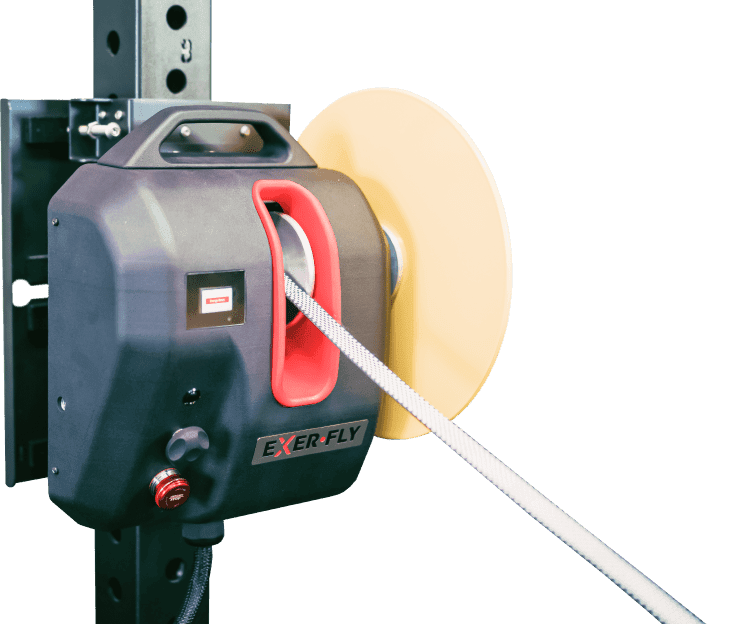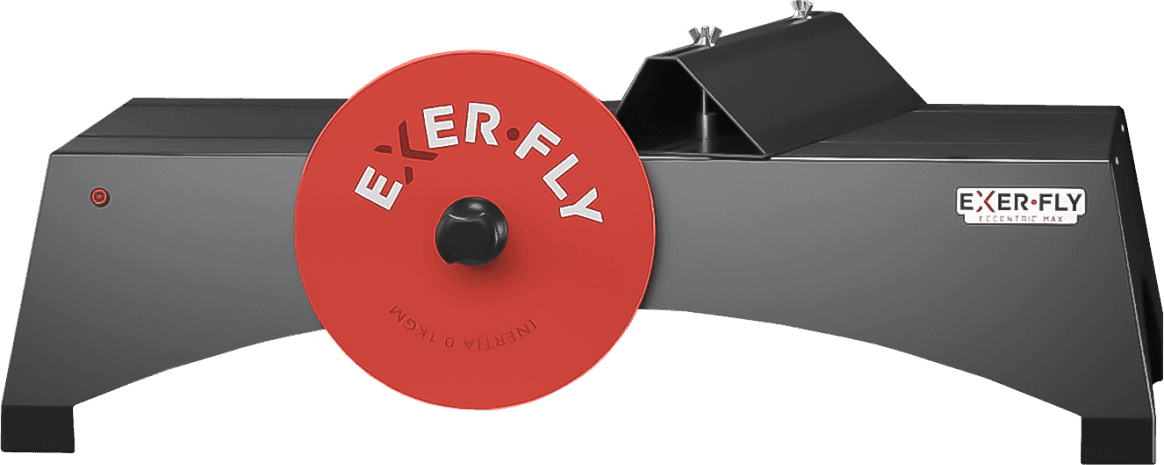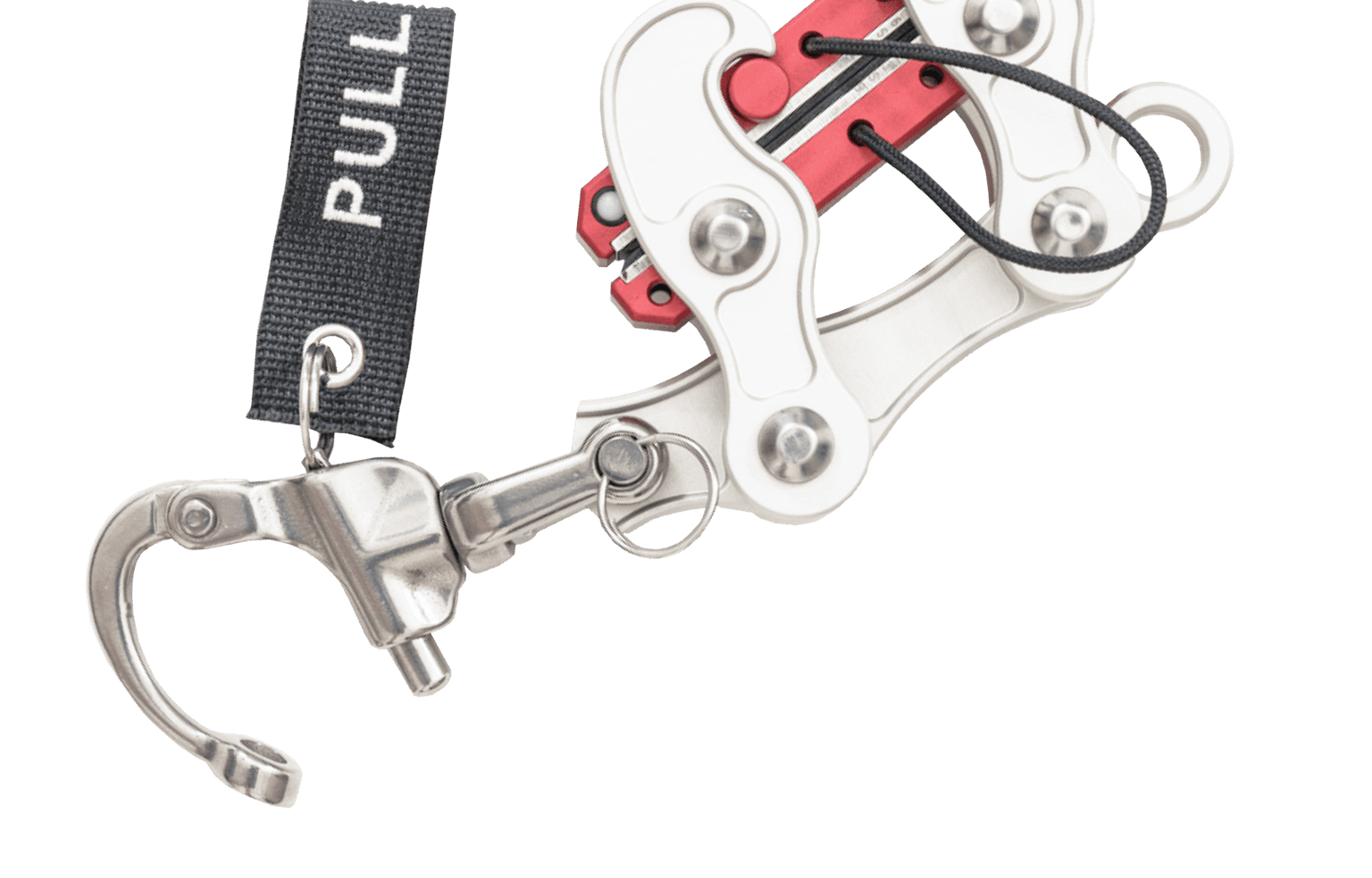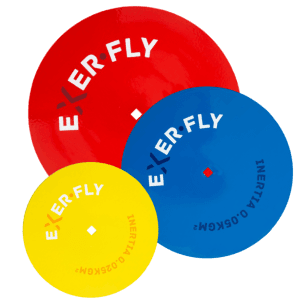
How Professional Tennis Players Prepare With The Exerfly
Tennis is an intermittent sport with gross bodily movements within a small playing area (average distance per point 6m) [1]. The physical demands of tennis are more explosive type movements, which can be in any direction. Thus, a player’s ability to accelerate, decelerate and change direction is pivotal. In my experience, regardless of the level of competition.
Whether junior or professional, the deceleration and the organisation a player demonstrates before the ball strike is at least as critical as an acceleration towards and through the target, perhaps even more important.
Why Flywheel Over Traditional Strength Training For Tennis?
There are multiple ways to improve the deceleration capability of an athlete. Awareness and coaching of the technical demands are essential so the body can find its greatest mechanical advantage in the motor pattern of movement.
And then, there is the strength and motor coordination of the musculotendinous structures to allow the body to produce the desired movement efficiently. This is important for both performance attributes and injury prevention. I have used the Exerfly system to promote both of these significantly.
I love the flywheel system over traditional pully-type systems because it increases resistance throughout the eccentric phase of muscle contraction. It is widely accepted in sports science that eccentric strengthening is prioritized for musculotendinous adaptions to enhance physiological improvements in muscle fibres, tendons, and aponeurotic tissue [2].
Exerfly has been a tremendous addition to our gym, allowing this type of training to become easily integrated into our injury prevention and explosive power blocks, with the off-court physiological improvements distinctly correlating to on-court improvements.
Further to the high-end eccentric load the flywheel produces, the system also demands a high load isometric contraction, perhaps the most evident in the frequently used lateral lunge in tennis. For example, a player's proximal adductor tendon will undergo extreme loads throughout a full stretch side lunge, which is often completed at relatively high speeds.
This eccentric load through the proximal tendon is followed by a momentary high load isometric contraction before initiating the concentric phase of muscle-tendon loading [3].
This is particularly noticeable on clay courts, where players will experience sliding on the surface at the end range of hip abduction. The muscle must be strong enough to enable maximal force production, and the tendon must be strong enough to withstand the force placed on it.
Lucky for us, we routinely utilize flywheel training to tackle both fundamental requirements. Even more fortunate when athletic groin pain is one of the most common injuries in change of direction sports, often leading to time on the sidelines.
For example, on average, groin injury in Australian rules footballers will lead to 4.2 missed games per year [4]. Groin injury is also widely accepted as the highest predictor of subsequent injury, with re-injury accounting for 15% of all groin injuries, requiring significantly longer absence from play than first-time injuries [5].
How International Tennis Players Prepares With The Exerfly Flywheel Training Device
I am currently working with international tennis player. To enable her to remain on the court and to consistently perform at her best, we frequently utilise the Exerfly system in her training program, whether the focus of the block is strength, strength endurance, power, or injury prevention.
The main strength exercise we apply is the lunge. This offset close chain skill requires control of balance and even weight distribution while performing the movement, which can tolerate heavy loads.
The Exerfly also distributes this weight around her hips, which is of great benefit as it is comfortable and reduces axial compression through the spine, which is often evident in the traditional barbell split squat / lunge type exercises.
This exercise particularly builds the strength base and fundamental movement to replicate the stance required to hit the tennis ball from the baseline, a frequent movement in a competitive match.
Balance is crucial for all things in life, particularly in sport, whether technical, tactical, or physical. Finding the balance and strength relationship between agonist and antagonist muscle groupings is important for the efficiency of movement, power output, and injury prevention.
One of my favorite global exercises to promote hamstring and glute strength is the RDL (Romanian deadlift), which is easy to perform safely on the Exerfly.
Hip adductor strength is fundamental, especially when preparing for the European clay season. We utilize the adductor ankle strap and portable unit to localize muscle-tendon loading.
As detailed above, due to the specific design of the system, resistance increases throughout eccentric activation of the adductor muscle group. Therefore, this also adds an element of more global hip stability and trunk control, adding to the quality of the exercise.
We also commonly utilize the Exerfly for rotator cuff strength with the same philosophy. Due to the unilateral nature of tennis and exaggerated pronation in repetition and intensity, poor scapular mechanics develop over time and manifest in imbalances in internal rotation (IR) and external rotation (ER) strength.
One of the most frequent and vital exercises adapted in professional tennis is the activation and strength of the rotator cuff to eliminate these imbalances. Using the Exerfly portable unit, external rotation is easily exercised in every position depending on the flexion and/or abduction of the shoulder(s).
Final Thoughts
Flywheel training is a new athlete training method that utilizes flywheel inertia to train and develop your musculotendinous system like never before. The capacity of Exerfly to load on eccentric and isometric contraction is the safest you can find on the market.
High-level athletes always look for an efficient and safe way to improve their performance. This is why tennis players included flywheel exercises in her training program.
Bio
I am a strength and conditioning coach and have worked in professional tennis for over 10 years, both at the academy and individual professional level.
References
- Pereira, T. J. C., Nakamura, F. Y., de Jesus, M. T., Vieira, C. L. R., Misuta, M. S., de Barros, R. M. L., & Moura, F. A. (2017). Analysis of the distances covered and technical actions performed by professional tennis players during official matches. Journal of sports sciences, 35(4), 361-368.
- Hyldahl, R. D., & Hubal, M. J. (2014). Lengthening our perspective: morphological, cellular, and molecular responses to eccentric exercise. Muscle & nerve, 49(2), 155-170.
- King, E., Ward, J., Small, L., Falvey, E., & Franklyn-Miller, A. (2015). Athletic groin pain: a systematic review and meta-analysis of surgical versus physical therapy rehabilitation outcomes. British Journal of Sports Medicine, 49(22), 1447-1451.
- Orchard, J. (2016). The 2016 AFL Injury Survey, Australian Football League.
- Werner, J., Hägglund, M., Waldén, M., & Ekstrand, J. (2009). UEFA injury study: a prospective study of hip and groin injuries in professional football over seven consecutive seasons. British journal of sports medicine, 43(13), 1036-1040.
- Alrabaa, R. G., Lobao, M. H., & Levine, W. N. (2020). Rotator cuff injuries in tennis players. Current reviews in musculoskeletal medicine, 13(6), 734-747.






